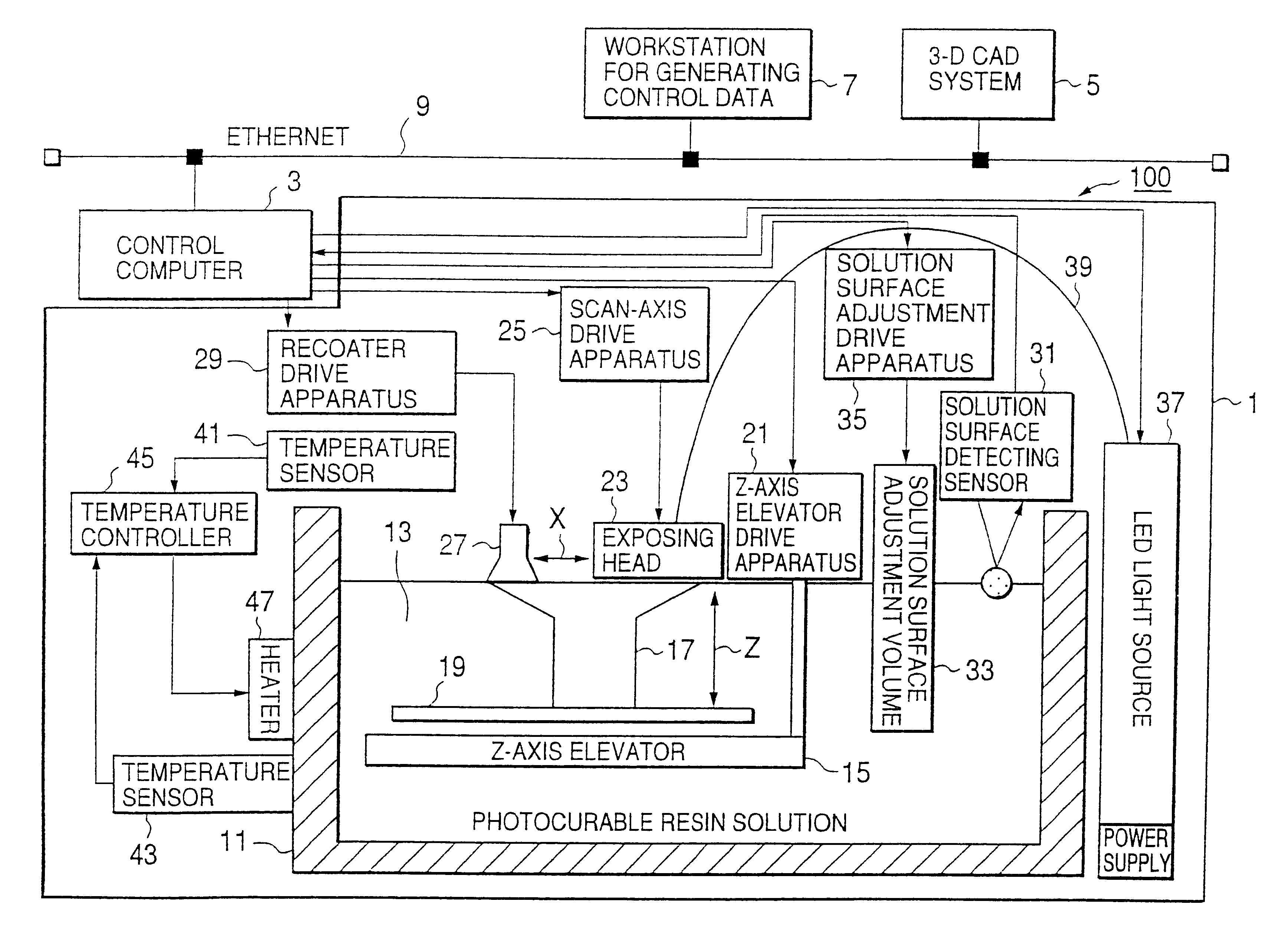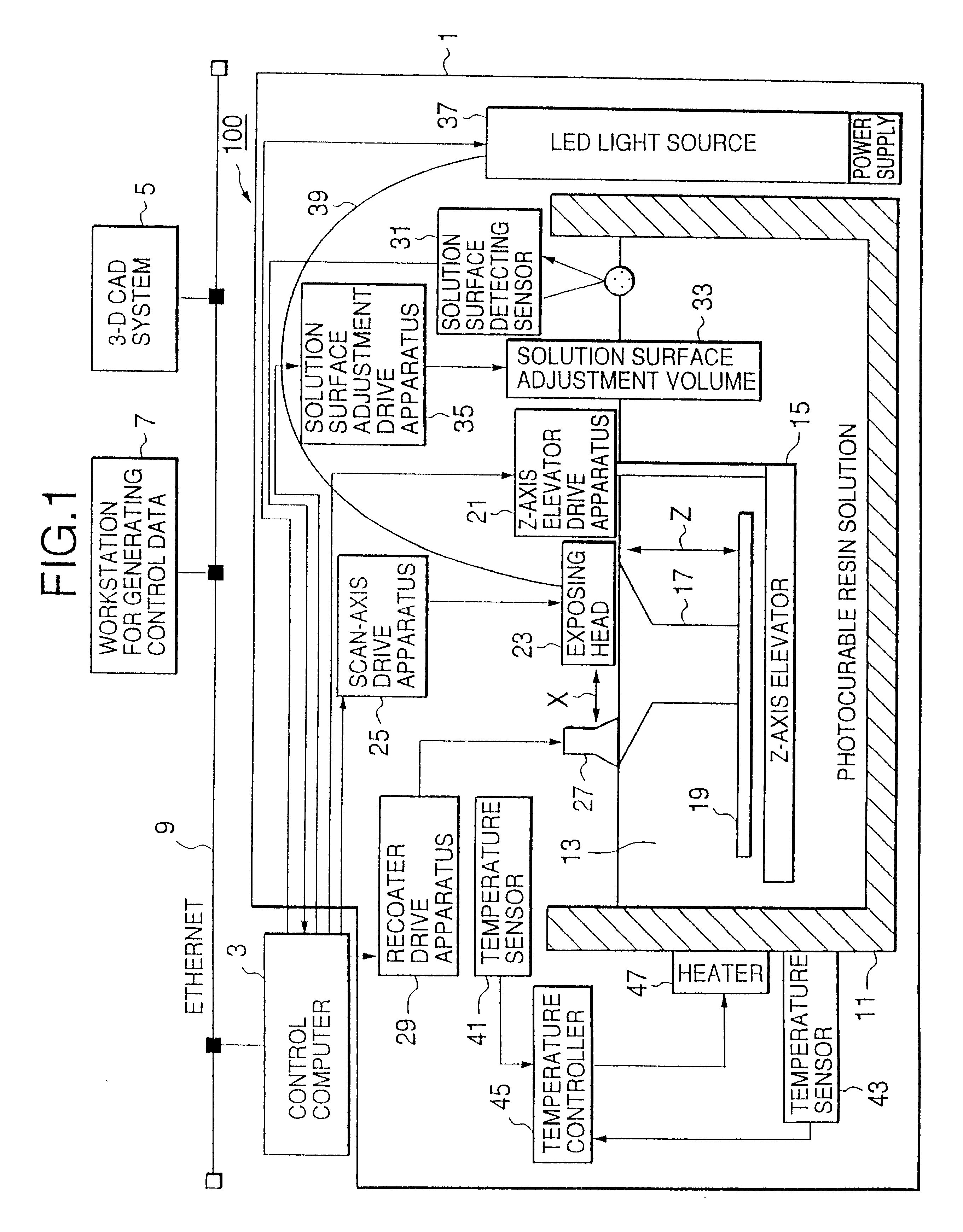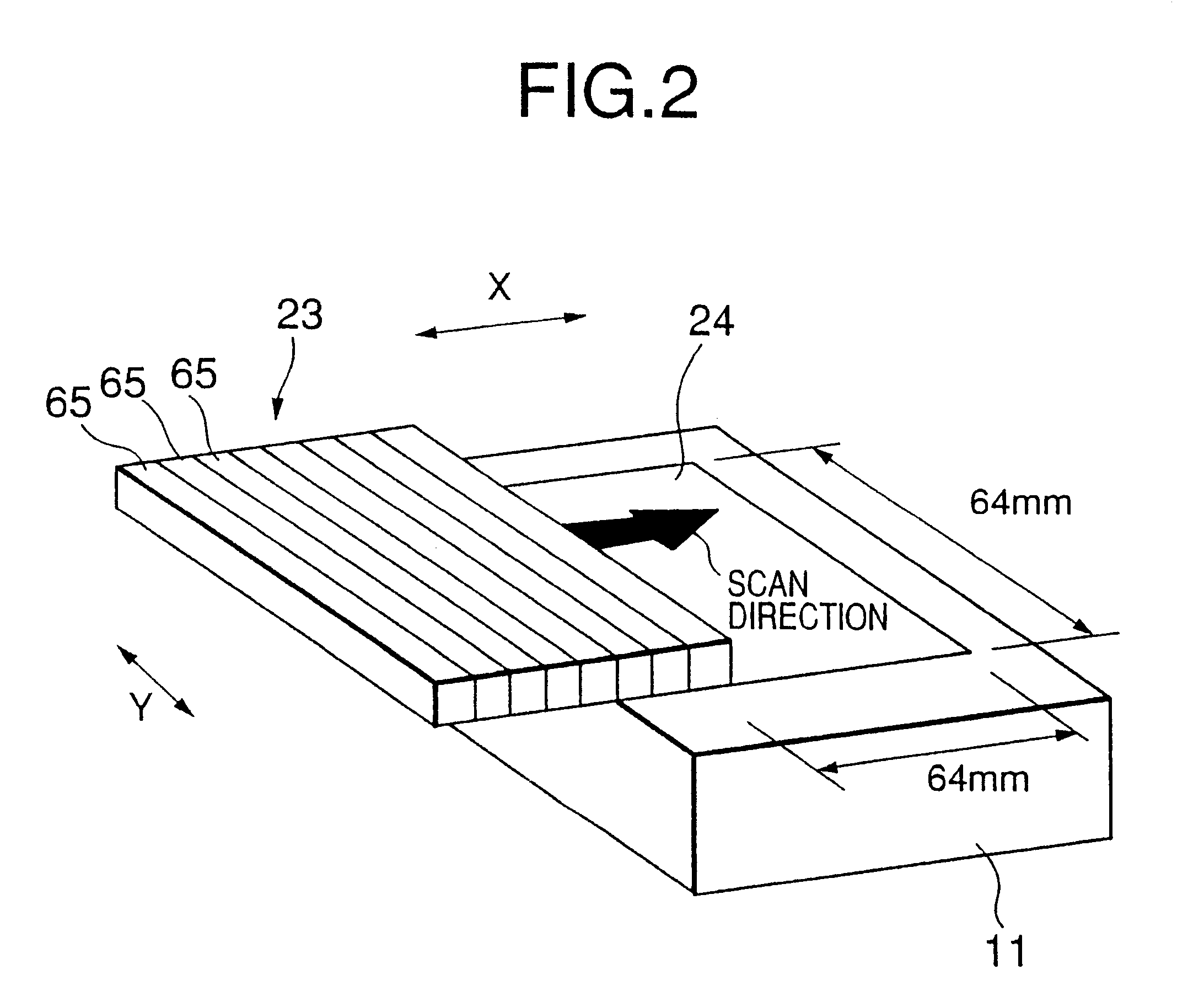Optical formation device and method
- Summary
- Abstract
- Description
- Claims
- Application Information
AI Technical Summary
Benefits of technology
Problems solved by technology
Method used
Image
Examples
Embodiment Construction
FIG. 1 shows the overall constitution of a solid model creation apparatus associated with an embodiment of the present invention.
This solid model creation apparatus 100 possesses an apparatus main body 1 comprising mechanisms necessary for solid model creation, a light source, and drive apparatuses therefor; and a control computer 3 for controlling operation of this main body 1. The control computer 3 may be connected by way of "Ethernet" or other such telecommunications network 9 to a three-dimensional CAD system 5, a workstation 7 for generation of control data, and so forth. The three-dimensional CAD system 5 performs three-dimensional modeling of a solid model and generates three-dimensional profile data for the solid model. The workstation 7 for generation of control data slices this three-dimensional profile data into a multiplicity of thin layers, generates a two-dimensional profile for each layer, and supplies this two-dimensional profile data for each layer, thickness data,...
PUM
| Property | Measurement | Unit |
|---|---|---|
| Size | aaaaa | aaaaa |
| Diameter | aaaaa | aaaaa |
| Size | aaaaa | aaaaa |
Abstract
Description
Claims
Application Information
 Login to View More
Login to View More - R&D
- Intellectual Property
- Life Sciences
- Materials
- Tech Scout
- Unparalleled Data Quality
- Higher Quality Content
- 60% Fewer Hallucinations
Browse by: Latest US Patents, China's latest patents, Technical Efficacy Thesaurus, Application Domain, Technology Topic, Popular Technical Reports.
© 2025 PatSnap. All rights reserved.Legal|Privacy policy|Modern Slavery Act Transparency Statement|Sitemap|About US| Contact US: help@patsnap.com



